Revamping Your Living Room with DIY Furniture Makeovers
Are you tired of looking at the same old furniture in your living room? Do you want to breathe new life into your space without breaking the bank? Well, you're in luck! This guide is all about creative and budget-friendly ways to transform your living room through DIY furniture makeovers. Imagine stepping into a room that reflects your personal style, where every piece of furniture tells a story, and everything feels fresh and inviting. In this article, we’ll explore how to take your existing furniture and give it a brand new look with just a little bit of creativity and elbow grease.
First things first, let’s talk about the furniture itself. Choosing the right pieces for your makeover is crucial. You want to select items that not only fit your vision but also suit your space. Think about the size of your room—too much furniture can make it feel cramped, while too little can leave it feeling empty. Look for materials that are durable and styles that resonate with your taste. Whether it’s a vintage chair that needs a new upholstery job or a coffee table begging for a fresh coat of paint, the possibilities are endless!
Now, before you grab your paintbrush, it’s essential to gather the necessary tools and materials. This will streamline your DIY process and enhance your results. You’ll need basic tools like brushes, sandpaper, and upholstery supplies, but don’t forget about the fun stuff—paints, stains, and fabrics that will bring your vision to life. The right tools can make all the difference, transforming what could be a tedious task into an enjoyable project.
Speaking of paint, let’s dive deeper into that. The right paint and finishes can dramatically change the look of your furniture. From chalk paint that gives a matte finish to spray paint for a smooth sheen, understanding your options is key. You might even want to experiment with different finishing techniques like distressing or glazing to add character and depth to your pieces. Remember, it’s all about expressing your unique style and making your living room a reflection of who you are.
Updating upholstery can also completely transform a piece of furniture. Have you ever walked into a room and felt instantly uplifted by the colors and textures? That’s the magic of upholstery! You can choose from a variety of fabrics that not only look great but also feel amazing. Whether it’s a cozy velvet for your sofa or a funky print for your chairs, reupholstering is a fantastic way to inject personality into your living space.
But wait, the transformation doesn’t stop with the furniture itself. Accessories and decor play a vital role in completing your living room makeover. Think about how you can choose decor items that complement your newly revamped furniture. A cohesive color palette ties everything together, while layering different textures adds depth and interest. Imagine mixing wood, metal, and fabric in a way that feels harmonious and inviting. Your living room can become a sanctuary that welcomes guests and provides comfort to your family.
Once your furniture makeover is complete, it’s crucial to maintain those beautiful pieces to ensure they stand the test of time. Regular cleaning and care techniques can keep your furniture looking fresh and new. For instance, using coasters can protect your surfaces from water rings, while appropriate placement can prevent wear and tear. Remember, a little bit of care goes a long way in preserving the beauty of your hard work.
In conclusion, revamping your living room with DIY furniture makeovers is not just about aesthetics; it’s about creating a space that feels like home. With the right pieces, tools, and a touch of creativity, you can transform your living area into a personal oasis. So roll up your sleeves, unleash your inner artist, and get ready to enjoy a living room that’s uniquely yours!
- What is the best type of paint for furniture makeovers?
Chalk paint is popular for its matte finish and ease of use, but spray paint can also provide a smooth, professional look. - How can I choose the right fabric for reupholstering?
Consider durability, color, and pattern. Fabrics like canvas or microfiber are great for high-traffic areas. - How often should I clean my DIY furniture?
Regular dusting and spot cleaning can help maintain the appearance of your furniture. Deeper cleaning can be done every few months.
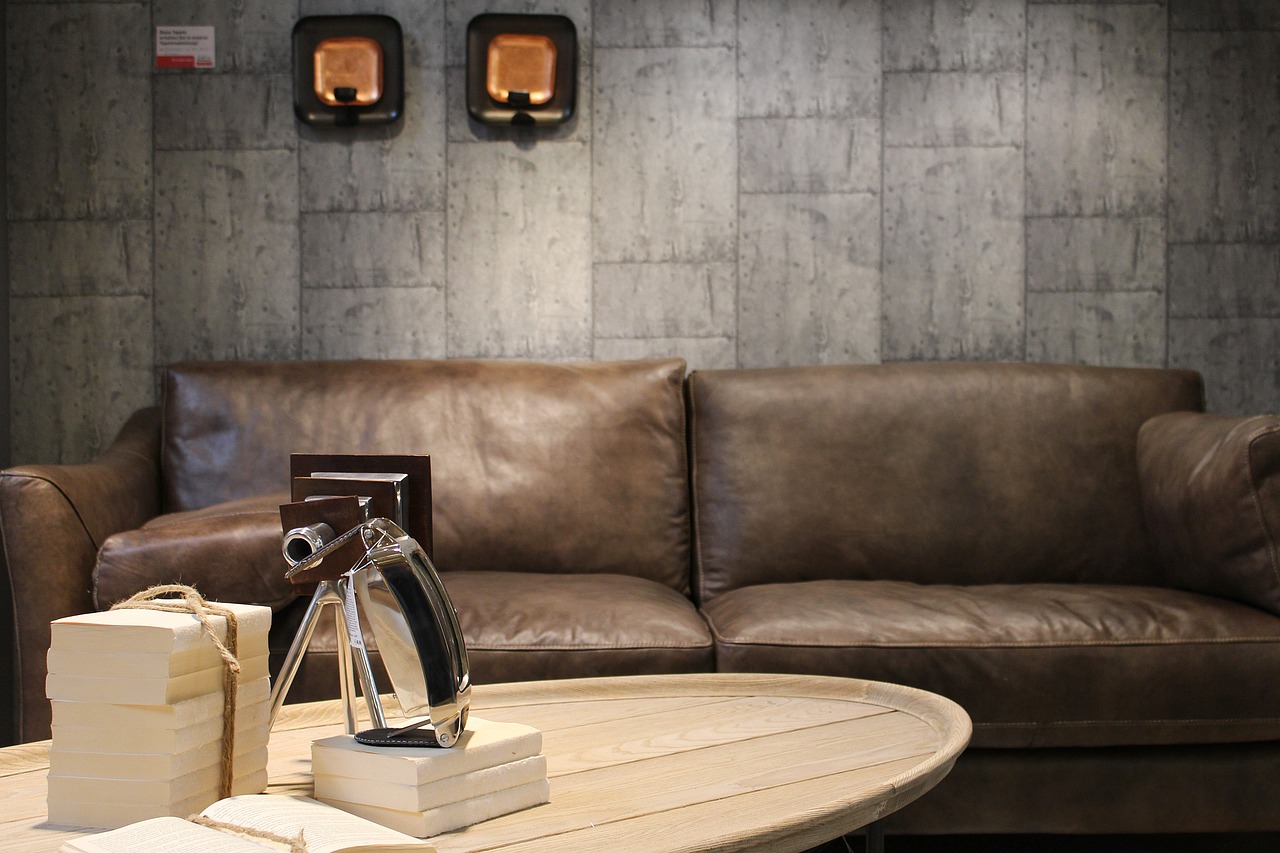
Choosing the Right Furniture for Makeover
When it comes to revamping your living room, the first step is to choose the right furniture for your makeover. This decision is crucial because the furniture you select will set the tone for the entire space. Think about it like picking the right ingredients for a recipe; the quality and compatibility of your choices can make or break the final dish. So, what should you consider when selecting furniture? Let's dive into some key factors!
First, consider the size of the furniture. You want pieces that fit well within your space without making it feel cramped or empty. Measuring your room and the furniture will save you from the headache of discovering that your new sofa is too big or too small. A good rule of thumb is to leave at least 18 inches of walking space between pieces to ensure a comfortable flow.
Next up is the material. Different materials not only impact the look of your furniture but also its durability and maintenance. For instance, wooden furniture can add warmth and character, while metal pieces can bring a modern edge. Think about how each material will fit into your lifestyle. If you have kids or pets, you might want to opt for materials that are easy to clean and resistant to wear and tear.
Style is another important factor. Are you leaning towards a modern aesthetic, or do you prefer something more rustic? Your furniture should reflect your personal taste and complement the existing elements in your living room. Consider the overall theme you want to achieve. For example, if you have a minimalist design in mind, sleek lines and neutral colors will work best. On the other hand, if you love a bohemian vibe, look for eclectic pieces that showcase vibrant colors and patterns.
Lastly, don't forget about functionality. Each piece of furniture should serve a purpose in your living room. For instance, a coffee table can double as storage, or an ottoman can provide extra seating. Think about how you use your space and choose furniture that enhances your lifestyle. It’s all about creating a room that is not only beautiful but also practical.
In summary, when choosing furniture for your makeover, keep these factors in mind:
- Size: Ensure it fits your space comfortably.
- Material: Choose durable and easy-to-maintain options.
- Style: Reflect your personal taste and existing decor.
- Functionality: Opt for pieces that serve multiple purposes.
By taking the time to carefully select your furniture, you're setting the stage for a successful DIY makeover that truly reflects your personality and enhances your living space. So, roll up your sleeves and get ready to bring your vision to life!
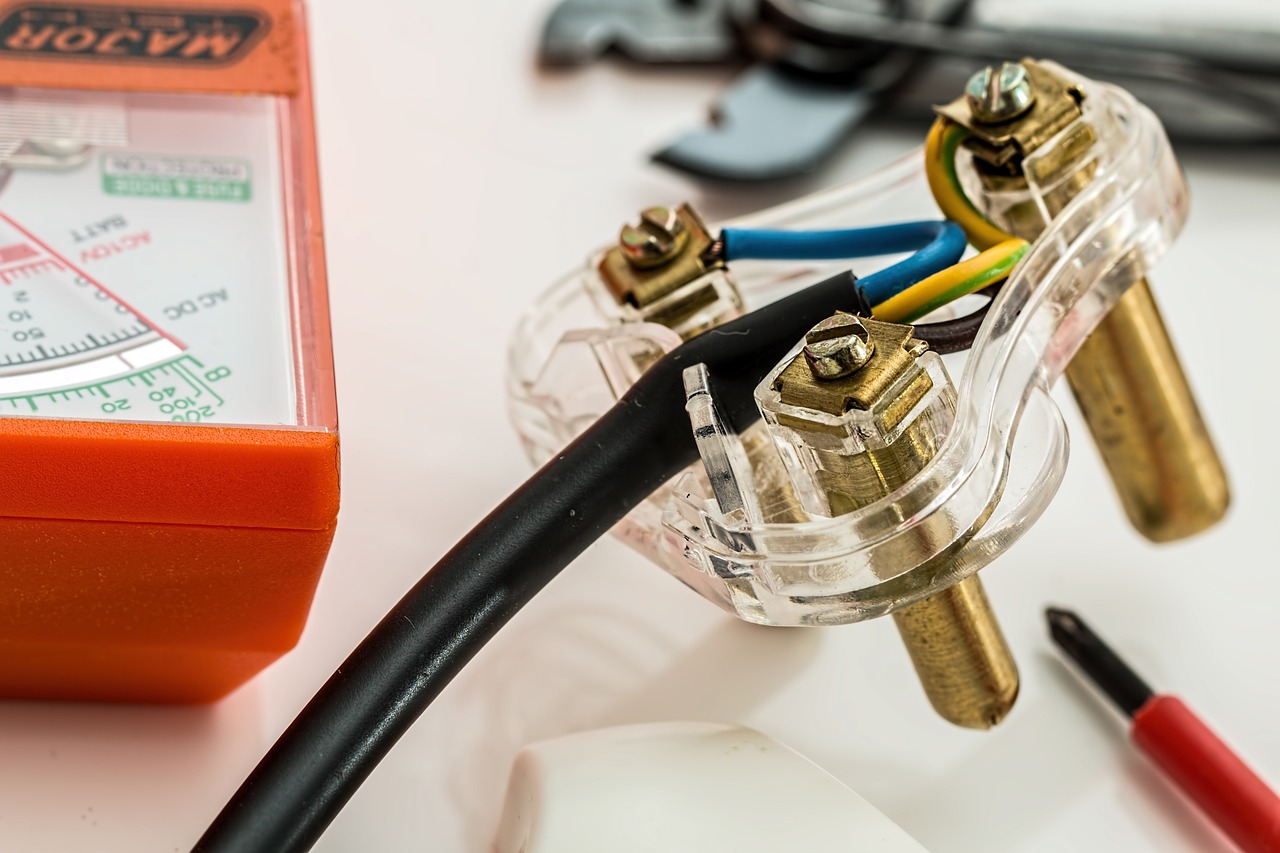
Essential Tools and Materials
Before diving into your DIY furniture makeover, it's vital to gather all the that will set you up for success. Think of this phase as gathering your weapons before heading into battle; the right tools can make all the difference between a smooth transformation and a frustrating mess. So, what do you need? Let's break it down.
First off, you’ll want to have a solid set of basic tools on hand. These include a tape measure for precise measurements, a screwdriver for assembling and disassembling furniture, and a hammer for any nailing needs. A good pair of safety goggles is also essential to protect your eyes from dust and debris. If you plan on painting or staining, a quality paintbrush and roller will be your best friends. You might also want to consider a paint sprayer for a more even finish.
Next, let’s talk about materials. The type of paint you choose can dramatically alter the appearance of your furniture. For instance, chalk paint is a popular choice for its matte finish and ease of use, while latex paint is durable and easy to clean. If you're looking to add a pop of color or a unique texture, consider using fabric for reupholstering or decorative elements. When selecting fabrics, go for something that complements your existing decor and is durable enough to withstand daily use.
In addition to paint and fabric, you’ll need finishing materials such as sealers and varnishes to protect your newly revamped pieces. These finishes not only enhance the look but also provide a protective layer against scratches and stains. Make sure to choose finishes that are suitable for the type of material you are working with, whether it’s wood, metal, or fabric.
To give you a clearer idea of what you might need, here’s a quick table summarizing some essential tools and materials:
| Tools | Materials |
|---|---|
| Tape Measure | Chalk Paint |
| Screwdriver | Latex Paint |
| Hammer | Fabric for Upholstery |
| Paintbrush/Roller | Sealants and Varnishes |
| Safety Goggles | Wood Stain (if applicable) |
Finally, don't forget to have some cleaning supplies ready, like rags, brushes, and a good cleaner to keep your workspace tidy. After all, a clutter-free environment can help spark creativity and keep you focused on your project. With the right tools and materials at your disposal, you’ll be well-equipped to tackle your DIY furniture makeover and create a space that reflects your unique style!

Paint and Finishes
When it comes to revamping your furniture, are your best friends. They have the power to completely alter the look and feel of a piece, transforming something ordinary into a stunning focal point in your living room. Imagine walking into your space and being greeted by vibrant colors and textures that reflect your personality! The right choice of paint can make all the difference. So, let’s dive into the world of paints and finishes to help you achieve that dream makeover.
First off, you need to consider the type of paint that will work best for your project. There are several options available, each with its own unique characteristics:
| Type of Paint | Best For | Finish |
|---|---|---|
| Chalk Paint | Furniture with a vintage look | Matte |
| Acrylic Paint | Wood and metal surfaces | Satin to Glossy |
| Spray Paint | Intricate designs and details | Various finishes available |
| Milk Paint | Eco-friendly projects | Matte and Distressed |
Each type of paint brings its own charm to the table, so think about the style you want to achieve. For instance, if you’re going for a shabby chic vibe, chalk paint is perfect as it gives a soft, matte finish that can be easily distressed. On the other hand, if you want a sleek and modern look, acrylic or spray paint might be the way to go.
But the paint is just one part of the equation! Finishes are equally important as they not only enhance the aesthetics but also protect your furniture from wear and tear. Here are some popular finishing techniques:
- Distressing: This technique adds character by giving your furniture a worn look, perfect for rustic styles.
- Glazing: A translucent layer applied over paint to create depth and richness, ideal for adding a vintage touch.
- Varnishing: Provides a protective coat that enhances the color and shine, making your furniture durable and easy to clean.
Applying these finishes can be as simple as using a brush or cloth to apply the glaze or varnish, and it can elevate your piece to a whole new level. Just think of it like adding the final touches to a masterpiece; it’s what makes everything come together beautifully.
In conclusion, choosing the right paint and finish is essential for a successful DIY furniture makeover. It’s all about finding the perfect balance between aesthetics and functionality. With the right tools and techniques, you can create stunning pieces that not only look fantastic but also stand the test of time. So, grab your brushes and get ready to unleash your creativity!
Q: How do I choose the right paint for my furniture?
A: Consider the style you want to achieve, the material of the furniture, and whether you prefer a matte or glossy finish. Chalk paint is great for a vintage look, while acrylic is better for a modern finish.
Q: Can I use regular paint on furniture?
A: While you can use regular paint, it's best to choose paints specifically designed for furniture to ensure durability and proper adhesion.
Q: How do I prepare my furniture for painting?
A: Clean the surface thoroughly, sand it down to remove any old finishes, and fill in any holes or imperfections before applying paint.
Q: What is the best way to apply a finish?
A: Use a clean brush or cloth to apply your chosen finish evenly, and allow it to dry completely before using the furniture.
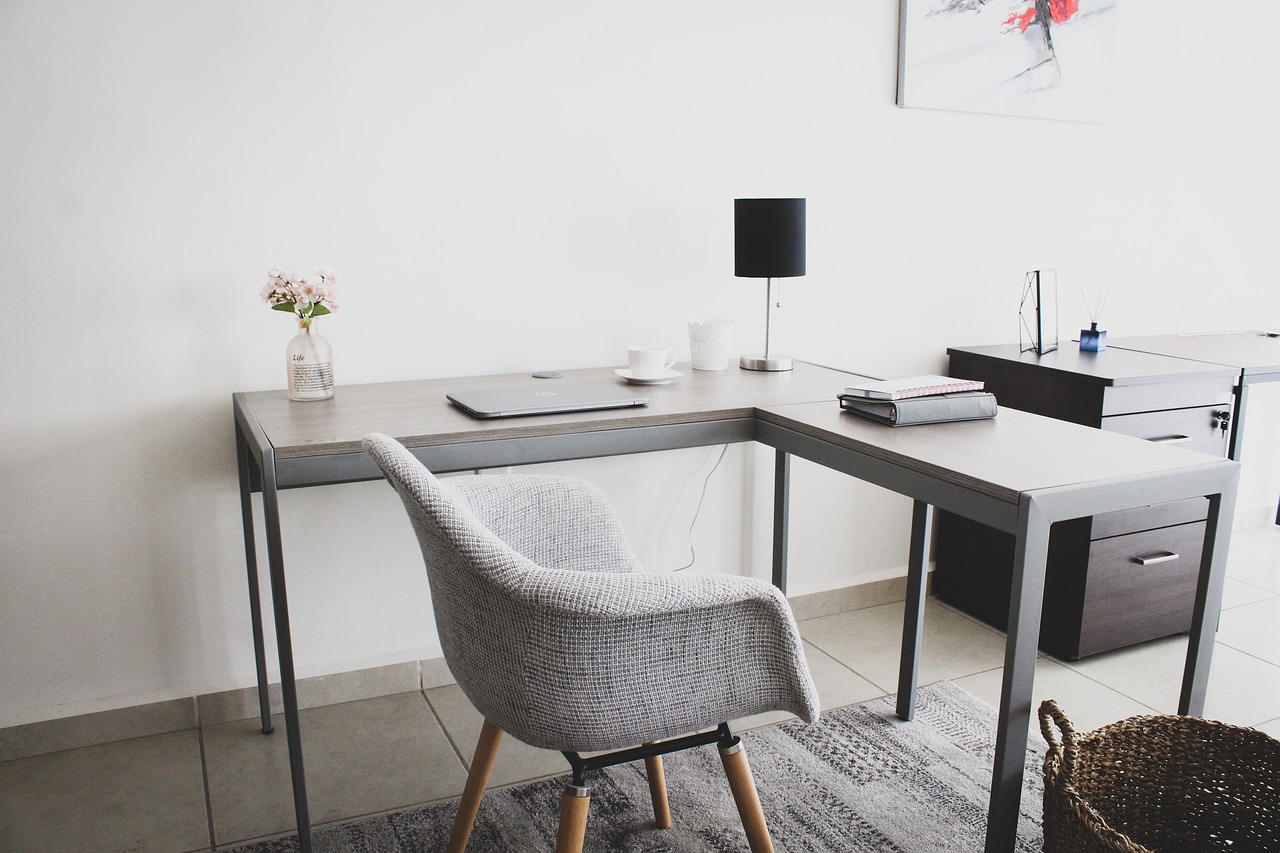
Types of Paints
When it comes to giving your furniture a fresh new look, the type of paint you choose can make all the difference. You might be wondering, "What’s the best paint for my DIY project?" Well, let’s dive into the world of paints and explore the top contenders that can help you achieve that stunning transformation!
First up, we have chalk paint. This type of paint is a favorite among DIY enthusiasts for its matte finish and ease of use. It adheres well to most surfaces without the need for extensive prep work. Imagine turning an old, drab dresser into a chic, farmhouse-style piece with just a few strokes of chalk paint! Not only is it available in a wide array of colors, but it also dries quickly, allowing you to complete your project in no time.
Next on our list is latex paint. Latex paint is known for its durability and versatility, making it a fantastic choice for furniture that sees a lot of use. It’s water-based, which means it’s easy to clean up, and it comes in both matte and glossy finishes. If you’re looking to add a pop of color to your living room with a vibrant accent chair, latex paint can help you achieve that look without breaking the bank.
Then there’s spray paint, which is perfect for those hard-to-reach nooks and crannies. It’s quick, efficient, and can cover a large area in a short amount of time. However, you’ll want to use it in a well-ventilated area and consider using a primer if you’re painting something dark a lighter color. Think of it as the superhero of the painting world—fast and effective, but it requires a little caution!
Another option is milk paint, which is a natural, eco-friendly choice made from milk proteins, lime, and pigments. It’s perfect for achieving a rustic, vintage look. Milk paint can be a bit tricky to work with, as it often requires mixing with water to get the right consistency, but the results can be stunning. Just picture a beautifully distressed coffee table that tells a story of its own!
Lastly, let’s not forget about oil-based paint. While it takes longer to dry and requires solvents for cleanup, it offers a hard, durable finish that is resistant to scratches and stains. This makes it an excellent choice for furniture that needs to withstand the test of time. If you’re revamping a piece that will be used frequently, oil-based paint might just be your best friend.
To summarize, here’s a quick comparison of the types of paints we discussed:
| Type of Paint | Best For | Finish | Durability |
|---|---|---|---|
| Chalk Paint | Quick makeovers | Matte | Moderate |
| Latex Paint | Durable surfaces | Various | High |
| Spray Paint | Intricate designs | Glossy or matte | Moderate |
| Milk Paint | Rustic finishes | Matte | Low to moderate |
| Oil-Based Paint | High-use furniture | Glossy | Very high |
With this knowledge, you’re now equipped to make an informed decision on which type of paint will best suit your DIY furniture makeover. So, grab your brushes and get ready to unleash your creativity!

Finishing Techniques
When it comes to giving your furniture that polished and professional look, mastering finishing techniques is key. These techniques not only enhance the visual appeal of your pieces but also protect them from daily wear and tear. Let's dive into some popular finishing methods that can take your DIY project to the next level.
One of the most sought-after techniques is distressing. This method involves intentionally creating a worn or vintage look. Imagine a beautiful wooden table that looks like it has a story to tell. To achieve this, you can use tools like sandpaper, a hammer, or even a wire brush to gently wear down edges and surfaces. The result? A charming piece that adds character to your living room.
Next up is glazing. This technique allows you to add depth and richness to the color of your furniture. By applying a thin layer of glaze over your base coat, you can achieve a translucent finish that highlights the wood grain or other textures. For example, a deep brown glaze over a cream-colored dresser can create a stunning contrast, making it a focal point of the room.
Another popular finishing technique is varnishing. Varnish is a protective finish that seals your furniture, keeping it safe from scratches, moisture, and fading. It comes in various sheens, from matte to high gloss, allowing you to choose the perfect finish that complements your style. Applying varnish is straightforward: simply brush it on evenly, let it dry, and sand lightly between coats for a smooth finish.
To help you visualize these techniques, here’s a quick comparison of their characteristics:
| Technique | Description | Best For |
|---|---|---|
| Distressing | Creating a worn, vintage appearance. | Rustic or farmhouse styles. |
| Glazing | Adding depth and richness to color. | Enhancing wood grain and textures. |
| Varnishing | Sealing and protecting surfaces. | All types of furniture for longevity. |
Lastly, don't forget about staining. This technique allows you to change the color of your wood while still showcasing its natural grain. Stains come in a variety of shades, from dark walnut to light oak, and can be applied with a brush or cloth. After staining, a protective finish like varnish can be added to ensure durability.
Incorporating these finishing techniques into your DIY furniture makeover can truly elevate your pieces. Whether you’re going for a rustic look with distressing or a sleek modern finish with varnish, the right technique will breathe new life into your furniture and create a stunning centerpiece for your living room.
- What is the best paint to use for furniture makeovers?
Chalk paint is a popular choice due to its matte finish and ease of use, while spray paint offers a smooth, even coat for a modern look. - How can I protect my furniture after finishing?
Using coasters, avoiding direct sunlight, and applying a protective sealant can help maintain your furniture's finish. - Can I mix different finishing techniques?
Absolutely! Mixing techniques like glazing over a distressed surface can create unique and personalized pieces.
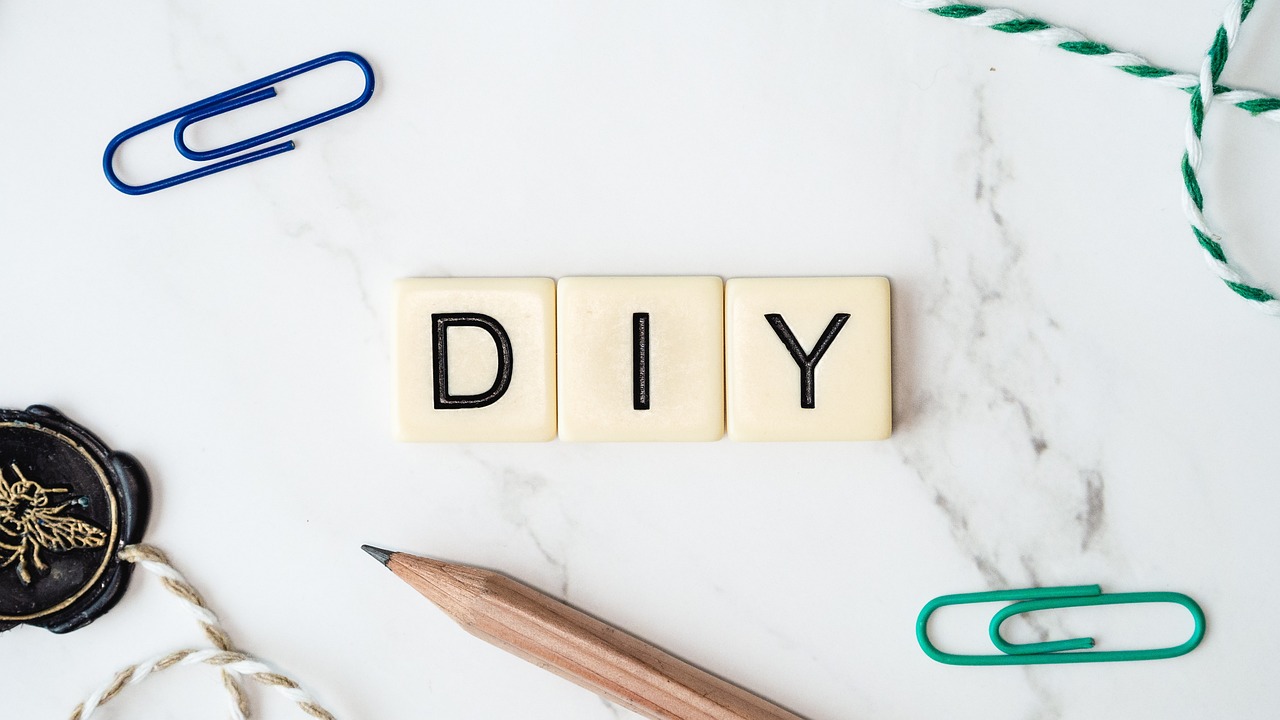
Upholstery and Fabrics
When it comes to giving your furniture a fresh look, upholstery is one of the most impactful changes you can make. Imagine your old, tired sofa transformed into a vibrant centerpiece that not only catches the eye but also invites you to sink into its comfort. The first step in this transformation is selecting the right fabrics. With so many options available, it can feel overwhelming, but don’t worry! Let’s break it down together.
Start by considering the functionality of the piece you’re reupholstering. For instance, if you have kids or pets, you might want to opt for durable fabrics that can withstand wear and tear. Fabrics like canvas, denim, and synthetic blends are excellent choices for high-traffic areas. On the other hand, if your furniture is primarily for show, you can indulge in luxurious options like velvet or silk that add a touch of elegance and sophistication.
Next, think about the color and pattern. This is where you can really let your personality shine! Do you prefer bold, vibrant colors or soft, muted tones? Patterns can also play a significant role in the overall feel of your living room. For example, floral prints can bring a touch of nature indoors, while geometric designs can add a modern flair. It’s all about finding what resonates with you and complements your existing decor.
Now, let’s talk about the upholstery process. If you're feeling adventurous, you can tackle this project yourself. Start by removing the old fabric carefully, making sure to note how it was attached. This will serve as a guide for attaching your new fabric. You’ll need some essential tools like a staple gun, scissors, and a measuring tape. If DIY isn’t your thing, don’t hesitate to reach out to a professional upholsterer. They can help you achieve that flawless finish that makes your furniture look brand new.
Lastly, don’t forget about the padding. Over time, the cushioning in your furniture can become flat and uncomfortable. Replacing or adding new padding can significantly enhance the comfort level of your chairs and sofas. Materials like foam and batting are great options for this. Just remember, the goal is to create a cozy and inviting space that reflects your style.
In summary, reupholstering your furniture is a fantastic way to breathe new life into your living room. By choosing the right fabrics, colors, and patterns, and perhaps even taking on the project yourself, you can create a space that feels uniquely yours. So gather your materials, roll up your sleeves, and let your creativity flow!
Q: How do I choose the right fabric for my furniture?
A: Consider the furniture's use, durability, and your personal style. For high-traffic areas, opt for durable fabrics like canvas or denim, while luxurious fabrics like velvet are perfect for less-used pieces.
Q: Can I reupholster furniture myself?
A: Yes, many people successfully reupholster their furniture. Just make sure you have the right tools and follow a guide to help you through the process.
Q: What should I do if my furniture's padding is flat?
A: Replace or add new padding materials like foam or batting to enhance comfort and support.
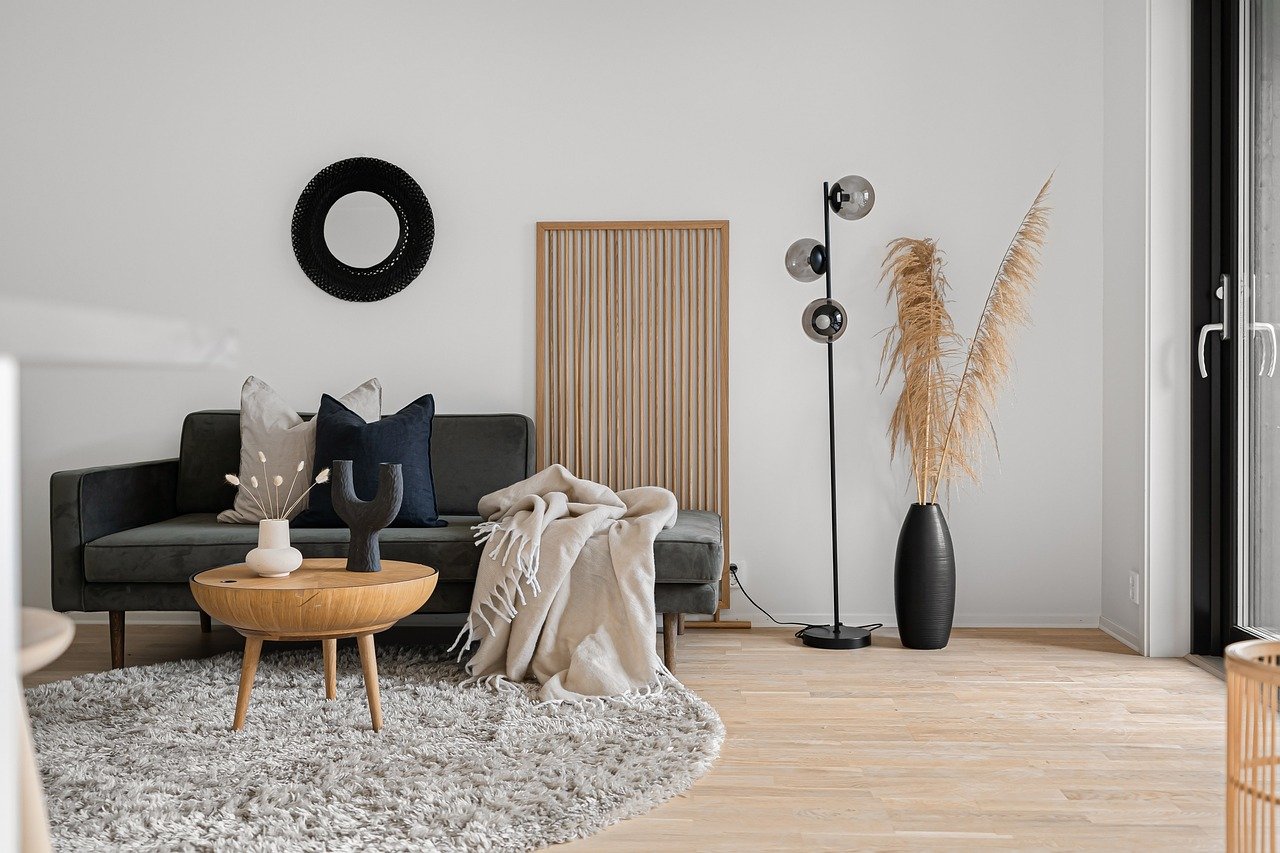
Incorporating Accessories and Decor
When it comes to revamping your living room, accessories and decor are the icing on the cake. They play a crucial role in pulling your entire space together, adding personality and flair to your newly transformed furniture. Imagine walking into a room that feels alive, vibrant, and uniquely yours. That's the magic of thoughtful decor! But how do you choose the right accessories that complement your style while enhancing the overall ambiance? Let's dive into the world of decor and explore some creative ideas.
First and foremost, consider the theme of your living room. Are you leaning towards a modern, minimalist vibe, or perhaps a cozy, bohemian feel? Your accessories should reflect this theme. For instance, if you’ve opted for a sleek, contemporary look, think about incorporating metallic accents like a chic lamp or a geometric coffee table. On the other hand, if you’re going for a more relaxed atmosphere, soft textiles, earthy tones, and natural materials can create a warm, inviting space.
One effective way to enhance your decor is by selecting a cohesive color palette. A well-thought-out color scheme can tie all elements of your living room together, creating harmony and balance. Consider using a color wheel to find complementary shades. For example, if your furniture features a rich navy blue, pairing it with soft yellows or warm grays can create a stunning contrast that draws the eye. Remember, it’s all about balance; too many colors can create chaos, while too few can make the space feel dull.
Additionally, layering textures can add depth and interest to your living room. Mixing different materials—like wood, metal, and fabric—can create a dynamic environment. For instance, a plush velvet throw on a leather sofa can soften the look and make the space feel more inviting. Similarly, incorporating a variety of decorative pillows in different fabrics can add a tactile element that invites guests to sink into comfort.
Don’t forget about artwork and wall decor. They serve as focal points that can transform a plain wall into a stunning backdrop. Consider hanging a large statement piece above your sofa or creating a gallery wall with a mix of framed photos, prints, and mirrors to reflect light and create a sense of openness. Remember, your walls are a blank canvas—don’t be afraid to get creative! You might even want to try some DIY art projects for a personal touch.
Finally, incorporate functional accessories that serve a purpose while enhancing the decor. Stylish storage solutions, like decorative baskets or chic shelves, can help keep your space organized while adding visual interest. A well-placed coffee table book or a unique sculpture can serve as conversation starters, making your living room not just beautiful but also functional.
Q: How do I choose the right accessories for my living room?
A: Start by defining your style and theme. Then, select accessories that complement your furniture and color palette. Don't hesitate to mix textures and materials for added depth.
Q: Can I use too many accessories?
A: Yes, too many accessories can create a cluttered look. Aim for a balanced approach by choosing a few key pieces that resonate with your style and keeping the overall space open and inviting.
Q: How can I maintain my decor's freshness over time?
A: Rotate your accessories seasonally or whenever you feel your space needs a refresh. Small changes, like swapping out throw pillows or adding new artwork, can make a significant impact.
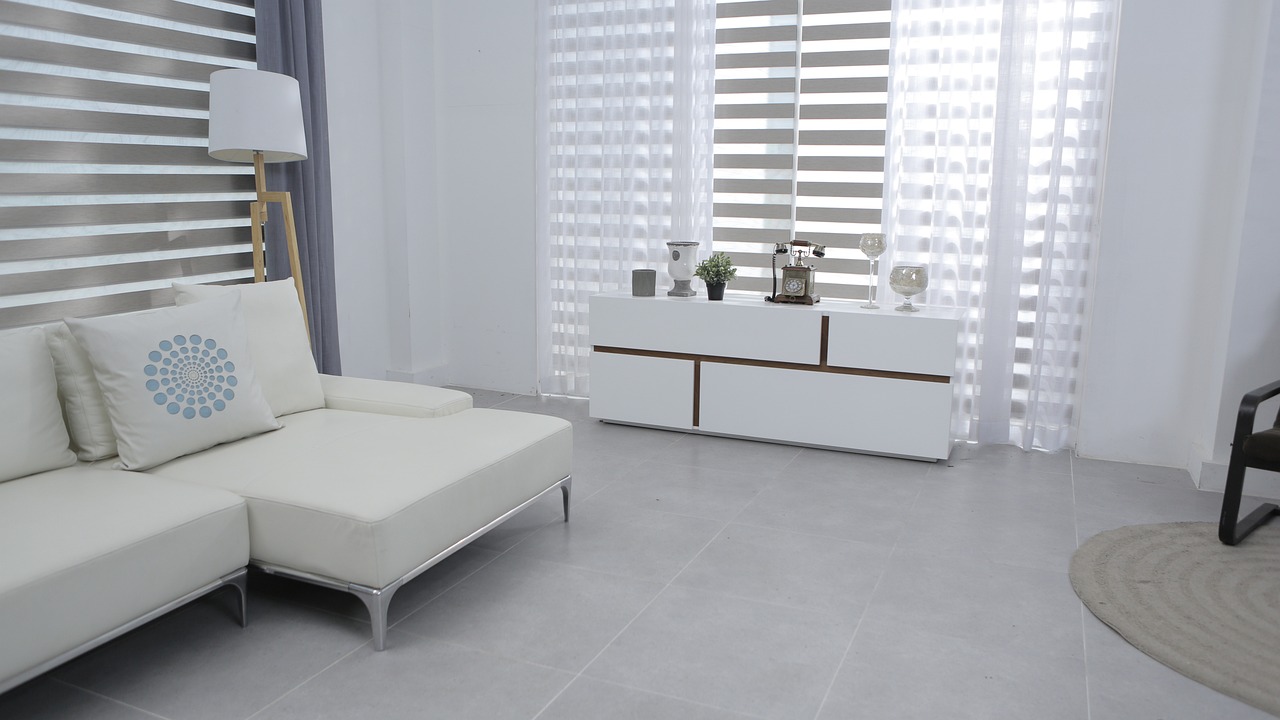
Choosing the Right Color Palette
When it comes to revamping your living room, one of the most impactful decisions you'll make is choosing the right color palette. Think of colors as the mood setters of your space; they can make a room feel cozy, vibrant, or even serene. But how do you pick the perfect combination that resonates with your personal style and harmonizes with your newly revamped furniture? It’s simpler than you might think! Start by considering the existing elements in your living room. What colors are already present in your furniture, decor, and walls? This will serve as your foundation.
Next, you might want to explore the concept of color theory. Familiarize yourself with the color wheel; it can be your best friend when selecting complementary or contrasting shades. For instance, if your furniture is a deep navy blue, consider pairing it with warm tones like mustard yellow or soft coral to create a stunning visual contrast. Alternatively, if you prefer a more monochromatic look, shades of gray or beige can add depth without overwhelming your space.
Additionally, think about the emotions that different colors evoke. Warm colors like reds and oranges can energize a room, while cool colors like blues and greens offer a sense of calm. It's essential to reflect on how you want to feel in your living space. Do you want it to be a lively gathering spot or a tranquil retreat? This emotional connection can guide your choices significantly.
Once you've narrowed down your options, consider testing your chosen colors. You can use sample pots of paint to swatch a few hues on your walls or even create a mood board with fabric swatches and decor items. This hands-on approach allows you to visualize how different colors interact with one another in your space. Remember, lighting plays a crucial role in how colors appear, so observe your selections at various times of the day.
Finally, don't be afraid to incorporate textures and patterns into your color palette. A well-placed patterned throw pillow or a textured rug can add an exciting layer to your living room, enhancing the overall aesthetic. To help you visualize your options, here’s a simple table that outlines a few popular color combinations and their emotional impacts:
| Color Combination | Emotional Impact |
|---|---|
| Blue & White | Calm & Refreshing |
| Gray & Yellow | Modern & Energetic |
| Green & Brown | Natural & Grounding |
| Red & Cream | Warm & Inviting |
In conclusion, choosing the right color palette is all about understanding the dynamics of your space and how you want to feel within it. With a little thought and creativity, you can create a living room that not only looks stunning but also feels like home. So, roll up your sleeves, grab those paint swatches, and let your imagination run wild!
- What is the best way to test paint colors? - Apply sample swatches on your walls and observe them at different times of the day.
- How many colors should I use in my palette? - Generally, 2-4 colors work well to create a cohesive look.
- Can I mix patterns in my living room? - Absolutely! Just ensure they share a common color to maintain harmony.
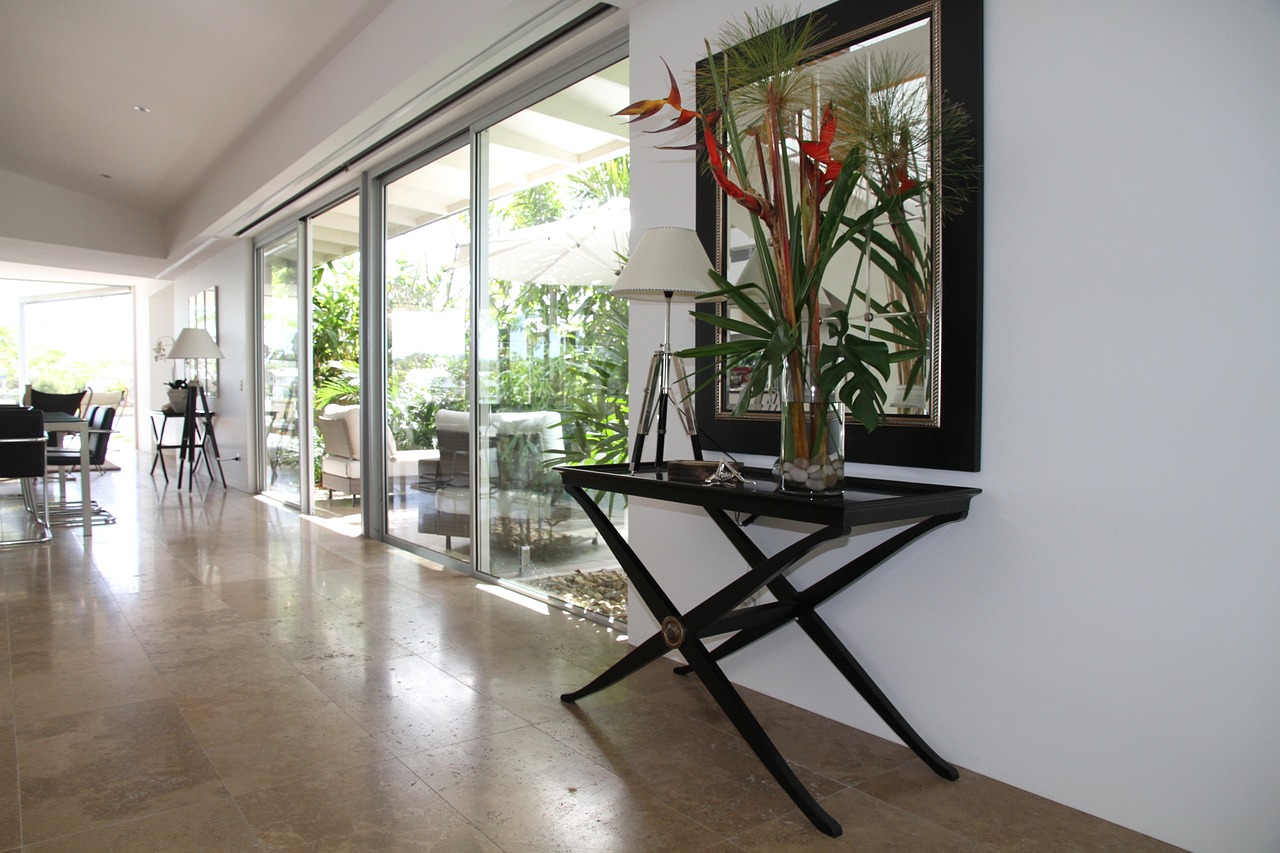
Layering Textures
When it comes to revamping your living room, one of the most effective ways to create a captivating atmosphere is through . Think of your space as a canvas, where each texture adds depth and character, much like brushstrokes in a painting. By combining different materials, you can achieve a balanced and visually appealing look that draws the eye and invites people to explore your space. So, how do you go about this delightful task?
First, consider the key textures you want to incorporate. A well-thought-out mix can include soft fabrics, rough woods, and sleek metals. For instance, imagine a plush velvet sofa paired with a reclaimed wood coffee table. The contrast between the soft and the hard creates a dynamic interplay that makes your living room feel inviting yet sophisticated. Don't shy away from experimenting; layering is all about finding that perfect balance!
To get started, you might want to focus on these essential elements:
- Fabrics: Consider using a variety of textiles such as cotton, linen, and velvet for cushions, throws, and curtains. Each fabric has its own feel and weight, contributing to the overall texture.
- Natural Materials: Incorporate elements like wood, stone, or wicker. A wooden coffee table or a stone accent wall can add an earthy touch that grounds the space.
- Metals: Shine a light on your decor with metal accents, such as brass or chrome. These materials can bring a modern edge to your layered textures.
Another fantastic way to layer textures is through your choice of accessories. Think about adding items like woven baskets, ceramic vases, or even metallic sculptures. These pieces not only serve as decor but also introduce new textures that enhance the overall aesthetic of your living room. For example, a soft knit throw draped over a sleek leather chair can create a beautiful contrast that invites comfort.
Lastly, don't forget about the importance of color in texture layering. While you're mixing materials, ensure that the colors harmonize well. A neutral palette can allow textures to shine, while bolder colors can create a lively atmosphere. Remember, the goal is to create a cohesive look that feels intentional and curated.
In summary, layering textures in your living room is about creating a multi-dimensional space that reflects your personality and style. By thoughtfully combining fabrics, natural materials, and metal accents, you can achieve an inviting and dynamic environment. So go ahead, unleash your creativity, and let your living room tell your unique story!
1. What are some easy textures to start layering in my living room?
Begin with soft fabrics like cushions and throws, then add natural elements like wood or stone, and finish with metallic accents for a well-rounded texture experience.
2. Can I mix different fabric patterns when layering?
Absolutely! Mixing patterns can add even more interest, but make sure they complement each other in color and style to maintain a cohesive look.
3. How can I ensure my textures don’t clash?
Stick to a common color palette and choose textures that contrast yet complement each other. For instance, pairing a soft fabric with a hard surface can create a beautiful balance.
4. Is there a rule for the number of textures I should use?
There’s no strict rule! However, a good guideline is to combine three to five different textures to create a rich, layered look without overwhelming the space.
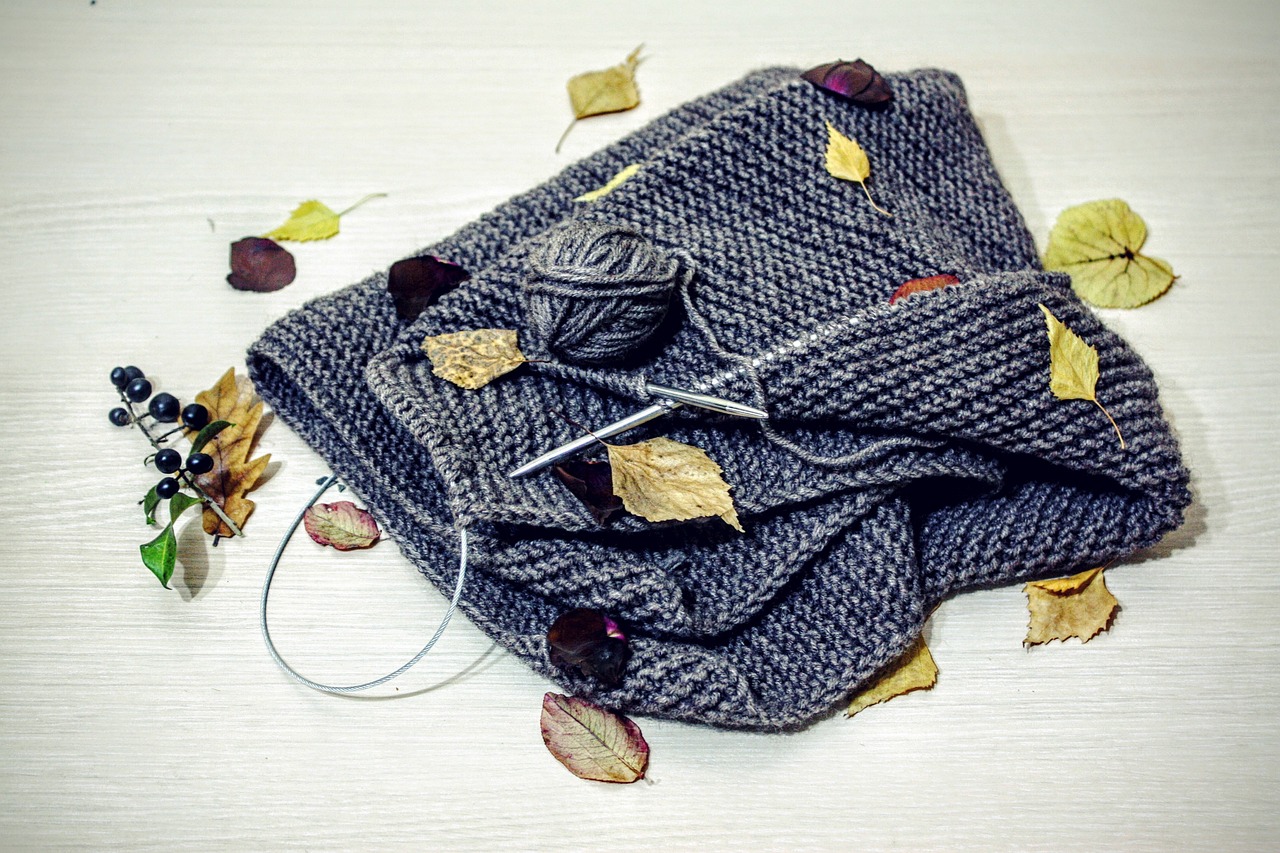
Maintenance Tips for DIY Furniture
Once you’ve poured your heart and soul into revamping your living room furniture, it’s crucial to ensure that your hard work doesn’t go to waste. Proper maintenance is the key to keeping your DIY masterpieces looking fresh and fabulous for years to come. Think of it like nurturing a plant; with the right care, it flourishes and adds beauty to your space. So, how can you keep your furniture in tip-top shape? Let’s dive into some essential maintenance tips that will help preserve your DIY creations.
First and foremost, cleaning is vital. Regular dusting and gentle cleaning will prevent grime buildup and keep your furniture looking its best. For wooden surfaces, a soft cloth dampened with a mixture of water and a mild soap is often sufficient. Avoid using harsh chemicals, as they can strip the finish and damage the wood. For upholstered pieces, a vacuum cleaner with an upholstery attachment can work wonders in removing dust and debris. Just remember, a little goes a long way!
To give you a better idea of how to care for different materials, here’s a handy table summarizing cleaning techniques for various surfaces:
| Material | Cleaning Method |
|---|---|
| Wood | Wipe with a damp cloth and mild soap; avoid harsh chemicals. |
| Upholstery | Vacuum regularly; spot clean with appropriate fabric cleaner. |
| Metal | Use a soft cloth and mild detergent; polish with metal cleaner. |
| Glass | Wipe with glass cleaner or a vinegar-water solution. |
Next up is protection. Just like you wouldn’t want to walk barefoot on a freshly mopped floor, your furniture needs a little shielding from the everyday wear and tear of life. Using coasters under drinks, placemats under plates, and covers when not in use can help protect your surfaces. It’s a small step that makes a big difference! Additionally, consider the placement of your furniture; avoiding direct sunlight can prevent fading and warping.
Finally, let’s talk about repair. Accidents happen; a scratch here, a dent there. Don’t fret! For minor scratches on wood, a simple touch-up marker or a bit of matching stain can work wonders. If your upholstery gets a tear, don’t panic—there are plenty of fabric patches and repair kits available that can blend seamlessly into your design. Keeping a small repair kit on hand can save you from larger, more costly fixes down the line.
In conclusion, maintaining your DIY furniture is all about being proactive. Regular cleaning, protective measures, and quick repairs will ensure that your lovingly crafted pieces remain a source of pride and joy in your living room. So, roll up your sleeves, grab your cleaning supplies, and show your furniture the love it deserves!
Q: How often should I clean my DIY furniture?
A: It’s best to dust and clean your furniture regularly, ideally once a week, to prevent buildup. Upholstered pieces may need vacuuming every couple of weeks.
Q: Can I use any type of cleaner on my furniture?
A: No! Always opt for mild cleaners that are suitable for the specific material of your furniture. Harsh chemicals can damage finishes and fabrics.
Q: How can I protect my furniture from sunlight?
A: Position your furniture away from direct sunlight, use window treatments, or apply UV-protective films to your windows to reduce exposure.
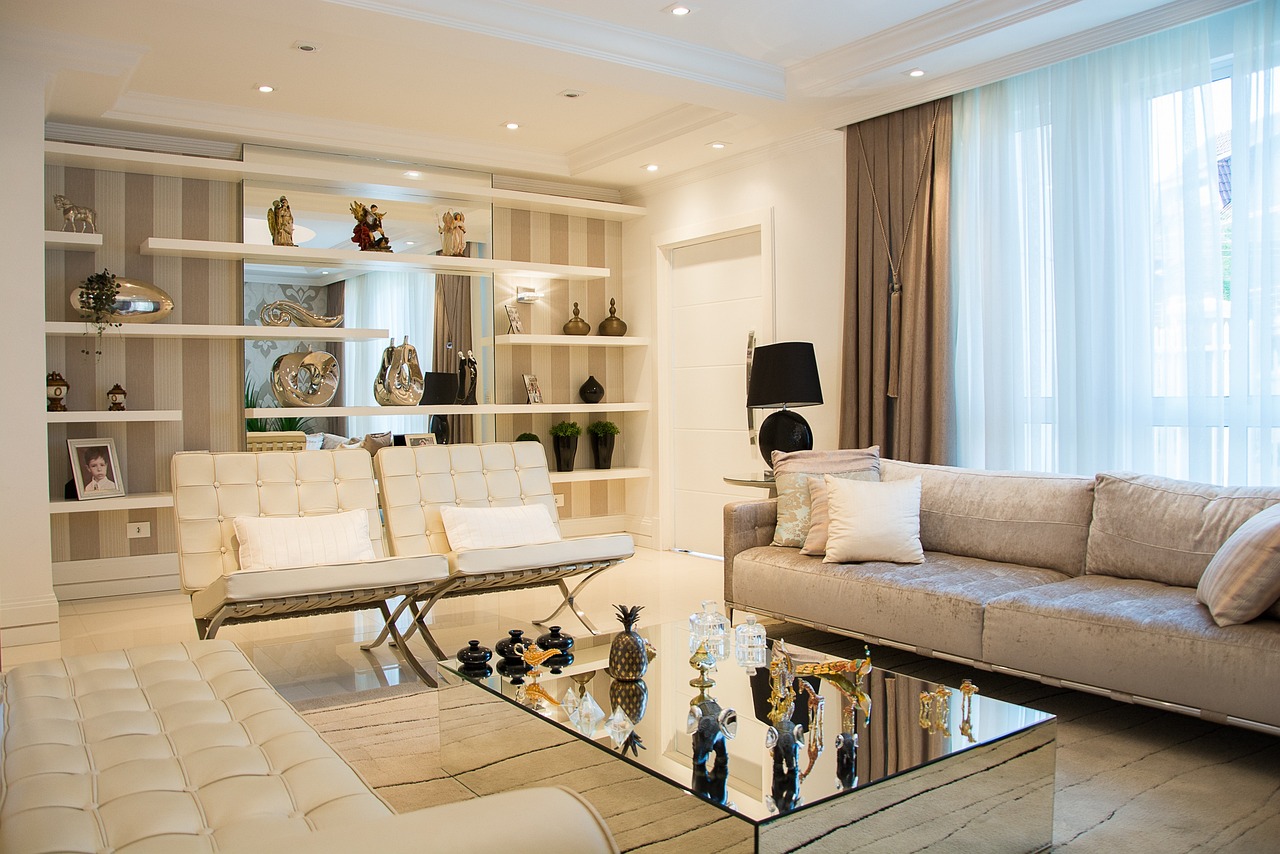
Cleaning and Care Techniques
Explore creative and budget-friendly ways to transform your living room through DIY furniture makeovers. This guide will inspire you to breathe new life into your space with personalized touches.
Selecting the right pieces is crucial for a successful DIY project. Consider factors like size, material, and style to ensure your furniture fits your vision and space.
Before starting your makeover, gather the necessary tools and materials. This section outlines must-have items that will simplify your DIY process and enhance your results.
Choosing the right paint and finishes can dramatically change the look of your furniture. Explore different types of paint, stains, and sealers to achieve your desired aesthetic.
Understanding the various types of paints available, such as chalk paint and spray paint, will help you make informed choices for your furniture makeover project.
Learn about different finishing techniques to protect and enhance your furniture, including distressing, glazing, and varnishing, to create a polished look.
Updating upholstery can completely transform a piece of furniture. Discover fabric options and techniques for reupholstering chairs, sofas, and cushions for a fresh appearance.
Accessories play a vital role in completing your living room makeover. Explore how to choose decor items that complement your newly revamped furniture and enhance the overall ambiance.
A cohesive color palette ties your living room together. Learn how to select colors that harmonize with your furniture and reflect your personal style.
Incorporating various textures adds depth and interest to your living room. Discover how to mix materials like wood, metal, and fabric for a balanced look.
Once your furniture makeover is complete, proper maintenance is essential. This section provides tips on how to care for your newly transformed pieces to ensure longevity.
To keep your newly revamped furniture looking fresh and beautiful, it's vital to implement effective cleaning and care techniques. Start by identifying the materials used in your furniture, as different materials require different cleaning methods. For instance, wooden furniture should be dusted regularly with a soft cloth to avoid scratches and maintain its shine. You can use a mixture of vinegar and water for a natural cleaning solution that won’t harm the finish.
When it comes to upholstered pieces, vacuuming is your best friend. Regularly vacuuming not only removes dust but also prevents dirt from embedding into the fabric. For stains, act quickly! Blot the area with a clean cloth and use a fabric cleaner suitable for your upholstery type. Always test any cleaner on a hidden area first to ensure it won’t damage the fabric.
Here are some quick tips for different materials:
- Wood: Use a damp cloth for cleaning and avoid soaking. Apply furniture polish every few months for added shine.
- Fabric: Vacuum regularly and treat stains immediately with appropriate cleaners.
- Leather: Wipe with a damp cloth and condition with a leather conditioner every 6-12 months.
Additionally, consider placing coasters under drinks and using placemats on surfaces to prevent scratches and heat damage. Protecting your furniture from direct sunlight will also help maintain its color and integrity over time. By following these cleaning and care techniques, you can ensure your DIY furniture remains a stunning focal point in your living room for years to come.
Explore ways to protect your DIY furniture from wear and tear, including the use of coasters, covers, and appropriate placement within your living space.
Q1: How often should I clean my furniture?
A: It depends on the material. Generally, it's good to dust wooden furniture weekly, vacuum upholstery every couple of weeks, and clean leather every few months.
Q2: Can I use regular household cleaners on my furniture?
A: It's best to use cleaners specifically designed for the material of your furniture to avoid damage.
Q3: How can I prevent scratches on my wooden furniture?
A: Use coasters, placemats, and consider applying a protective finish to the surface.
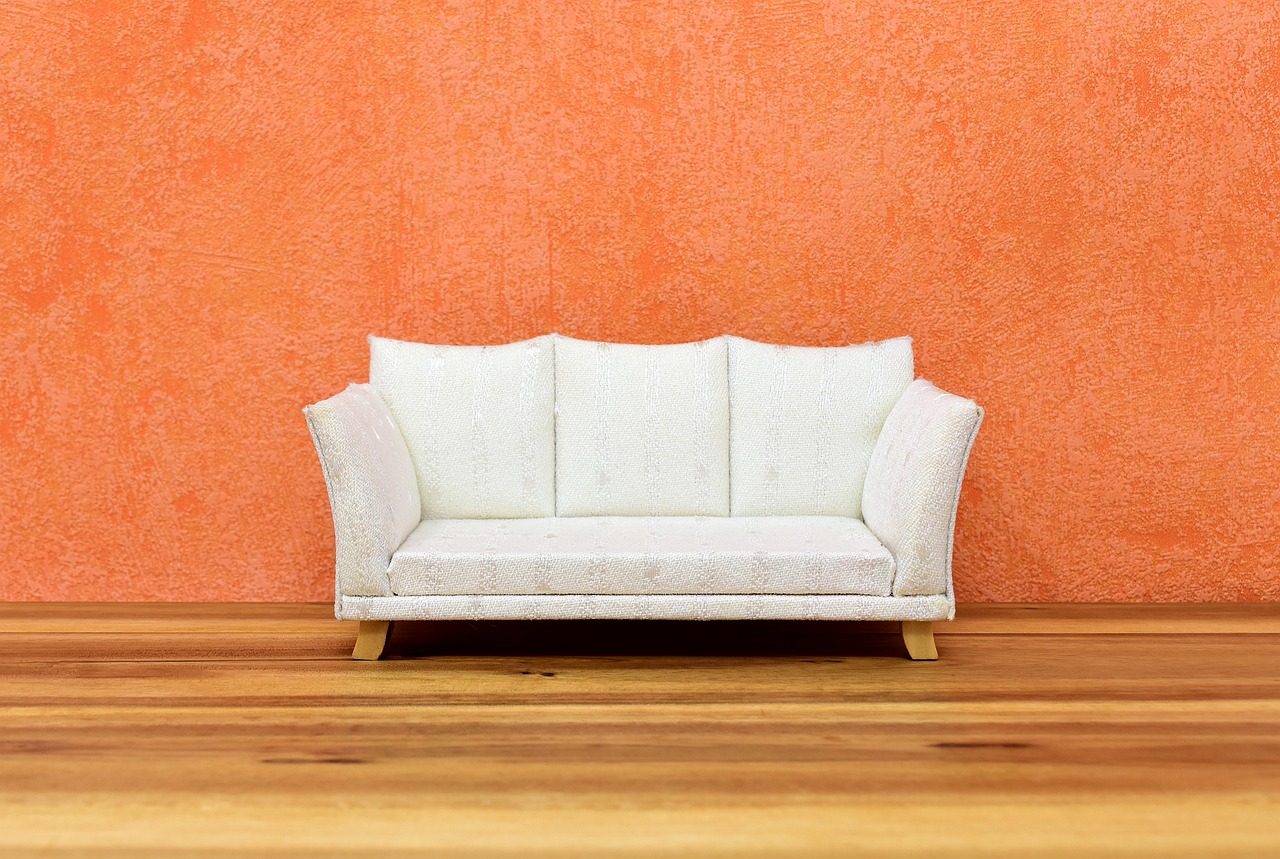
Protecting Your Furniture
Once you've put in the time and effort to revamp your furniture, the last thing you want is for it to get damaged or wear out prematurely. Protecting your DIY masterpieces is crucial to ensuring they remain stunning for years to come. Think of your furniture as a beautiful painting; just like you would frame and protect a work of art, your furniture deserves the same care. Here are some effective strategies to keep your pieces looking fresh:
First, consider using coasters for drinks. It's a small yet impactful change that can prevent unsightly water rings on your tables. You might think coasters are just for fancy gatherings, but trust me, they’re a lifesaver in everyday life. Plus, they can be a fun decor element themselves! Whether you opt for cork, ceramic, or even DIY coasters made from leftover wood, they add a personal touch while protecting your surfaces.
Another essential method is to use furniture covers. These are especially useful if you have pets or small children running around. A good cover can shield your upholstery from spills, scratches, and fur. There are many stylish options available that won’t detract from the aesthetics of your living room. Think of them as a protective layer that keeps your furniture safe without compromising your design vision.
Placement is also key. Consider the location of your furniture within the room. Avoid placing items in direct sunlight, as this can cause fading over time. If you have a sunny spot in your living room, think about using sheer curtains to filter the light. Additionally, keep furniture away from heat sources like radiators or fireplaces to prevent warping and cracking.
Lastly, regular maintenance is vital. Dust and clean your furniture regularly with appropriate cleaners to avoid buildup that can damage surfaces. For instance, using a soft, damp cloth can work wonders for wood finishes, while fabric can be maintained with vacuuming and spot cleaning. Incorporating these simple habits into your routine can significantly extend the life of your beloved pieces.
- How often should I clean my DIY furniture? It's best to dust and clean your furniture weekly to prevent dirt buildup.
- Can I use regular cleaning products on my reupholstered furniture? Always check the fabric type and use cleaners that are safe for the specific material.
- Are there specific coasters that are better for wood furniture? Yes, cork or felt coasters are excellent as they prevent scratching and are gentle on surfaces.
- How can I protect my furniture from pets? Consider using slipcovers or throws, and regularly groom your pets to minimize shedding.
Frequently Asked Questions
- What type of furniture is best for a DIY makeover?
When choosing furniture for a DIY makeover, look for pieces that have a solid structure and are made from materials that can be easily painted or upholstered. Items like wooden chairs, tables, and sofas are often great candidates because they can withstand a bit of transformation and offer a blank canvas for your creativity.
- Do I need special tools for DIY furniture makeovers?
While you don’t need a full workshop, having a few essential tools can make your DIY project smoother. Basic tools like a paintbrush, sandpaper, a staple gun, and a screwdriver will suffice for most projects. If you're planning to reupholster, a sewing machine might also come in handy!
- How do I choose the right paint for my furniture?
The right paint can make all the difference! For a matte finish, consider chalk paint, which is easy to work with and gives a vintage look. If you prefer something more durable, opt for acrylic or latex paints. Always test a small area first to see how the color looks on your furniture.
- What are some good fabric options for reupholstering?
When reupholstering, you have a world of fabric options! Look for durable materials like canvas, denim, or upholstery-grade fabrics that can withstand wear and tear. If you want a pop of color or pattern, consider using patterned cotton or linen blends that can add character to your furniture.
- How can I maintain my DIY furniture after the makeover?
Proper maintenance is key to keeping your furniture looking fresh! Regularly dust your pieces with a soft cloth and use appropriate cleaners for the material. For painted surfaces, avoid harsh chemicals that could damage the finish. Plus, using coasters and placemats can help prevent scratches and stains.
- What should I do if I make a mistake during my DIY project?
Don’t sweat it! Mistakes are part of the learning process. Most paint can be sanded down or painted over, and upholstery can often be adjusted or redone. Take a deep breath, assess the situation, and remember that creativity often stems from trial and error!



















